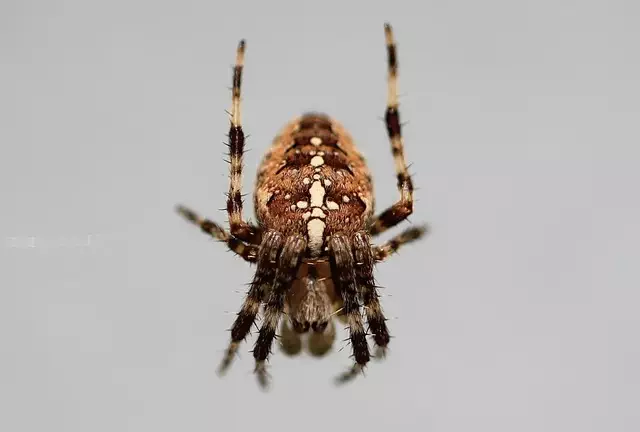Rodent control is a critical issue for homes and businesses, with rats and mice causing property damage, health risks, and costly infestations. Traditional methods like traps, poisons, and repellents have drawbacks, prompting the exploration of safer alternatives. Non-toxic solutions, such as natural repellents and physical barriers, offer eco-friendly options. Preventative measures, like sealing entry points and maintaining cleanliness, are key to avoiding infestations. Modern rodent control incorporates smart sensors, genetic engineering, and robotic solutions for efficient, sustainable management. Successful programs in urban areas and agriculture demonstrate tailored strategies, including habitat modification, community involvement, and integrated pest management, leading to reduced environmental impact and improved property protection.
Understanding Rodent Infestations: Common Types of Rodents and Their Behaviors

Rodent infestations can be a common household problem, with rats and mice being the most frequent visitors. Understanding these pests is the first step in effective rodent control. Both rats and mice belong to the same family of rodents, but they exhibit distinct behaviors and characteristics that make them unique.
Rats are larger, typically growing up to 10-15 cm in length (excluding the tail), with a robust body structure. They are known for their agility, excellent swimming abilities, and strong climbing skills. Rats are often more daring and can find their way into homes through various entry points, showing little aversion to exploring new environments. Mice, on the other hand, are smaller, usually measuring around 5-10 cm in length, with a slimmer build. They are agile runners and excellent climbers, but poor swimmers. Unlike rats, mice tend to be more cautious and prefer hidden entry points, making them less likely to venture into open spaces. Their curiosity often leads them to human habitats, where they can quickly establish infestations if left unchecked.
The Impact of Rodents: Damage, Health Risks, and Economic Consequences

Rodents, such as rats and mice, can have a significant impact on homes and businesses alike. Their presence often leads to considerable damage, from gnawed wires and insulation to contaminated food supplies and structures. This destructive behavior not only diminishes property value but also poses potential health risks for residents and workers.
Moreover, rodents are known carriers of various diseases, including salmonella, plague, and lymphocytic choriomeningitis. Their droppings and urine can trigger allergies and respiratory issues, adding another layer of concern. Economically, rodent infestations result in substantial costs for property owners and managers due to repair and remediation efforts, as well as potential legal liabilities associated with health hazards. Effective rodent control measures are therefore essential to safeguard both the health and financial stability of individuals and organizations.
Traditional Methods of Rodent Control: Traps, Poisons, and Repellents

Traditional methods of rodent control have long relied on traps, poisons, and repellents to manage and eliminate these pesky invaders. Traps, such as snap traps and live traps, are widely used due to their effectiveness in capturing or killing rodents humanely. Snap traps provide an immediate solution by swiftly dispatching rodents, while live traps allow for the capture and subsequent release of animals away from residential areas.
Poisons, including rodenticides, have also been employed but come with caution. These chemicals can be hazardous to pets, wildlife, and even humans if not handled properly. Repellents, on the other hand, offer a more natural approach by deterring rodents through scent or taste. Common repellents include pepper-based products and certain essential oils, which can help keep rats and mice at bay without resorting to harmful substances.
Non-Toxic Approaches: Safe and Environmental-Friendly Solutions for Rodent Management

When it comes to rodent control, non-toxic approaches offer a safer and more environmentally friendly alternative to traditional methods. These strategies focus on repelling or deterring rodents without resorting to harmful chemicals. One such method involves using natural repellents like peppermint oil, which has a strong scent that mice and rats find unpleasant. This can be applied around entry points and potential hiding places to discourage them from entering homes or buildings.
Another non-toxic approach is the strategic placement of physical barriers, such as steel wool or mesh, to seal off potential entry points. These barriers prevent rodents from gnawing their way in while allowing for easy inspection and maintenance. Additionally, using catnip can be an effective tool, as many cats find it appealing, and its strong scent can deter rodents from specific areas. Employing these non-toxic methods not only ensures the well-being of pets and humans but also contributes to a healthier environment by reducing exposure to harmful substances.
Preventive Measures: Securing Your Home and Property Against Rodent Intrusion

Rodent control is much easier and more effective when preventative measures are taken. Securing your home and property against rodent intrusion involves a combination of physical and practical barriers. Start by inspecting your home for any gaps, cracks, or holes that could serve as entry points. Seal these openings with materials like steel wool, caulk, or weatherstripping to create an impenetrable barrier. Ensure all doors and windows have secure fits and consider installing additional locks or security systems for enhanced protection.
Regular maintenance is key in rodent control. Keep your property clean and free of clutter, as rodents are attracted to hidden spaces and food sources. Store grains and other potential food items in sealed containers, and promptly clean up any spills or crumbs. Trim vegetation and trees away from the exterior of your home, eliminating potential hiding spots for rodents. By implementing these preventative measures, you significantly reduce the risk of a rodent infestation and maintain a secure living environment.
Professional Pest Control Services: When to Hire Experts for Effective Rodent Control

Cultural and Behavioral Strategies: Community Involvement in Rodent Prevention and Management

Community involvement plays a pivotal role in effective rodent control, particularly for long-term prevention and management. Cultural and behavioral strategies, when adopted collectively by residents, can significantly deter rodents from infesting homes and public spaces. Educating community members about the habits and preferences of rats and mice is essential; understanding their attraction to certain foods, shelter, and water sources empowers individuals to implement simple yet effective measures. For instance, securing trash cans with tight-fitting lids, eliminating open food sources, and maintaining clean yards can make areas less appealing to rodents.
Moreover, fostering a sense of collective responsibility encourages neighbors to watch out for signs of rodent activity and share information about prevention methods. Community events centered around learning about rodent behavior and sharing best practices can strengthen this bond. By combining individual actions with community collaboration, cultural and behavioral strategies offer a sustainable approach to rodent control, ensuring that efforts are not just immediate solutions but also long-lasting preventive measures.
New Technologies in Rodent Control: Innovative Tools and Techniques for Modern Times

In today’s world, rodent control has evolved significantly, thanks to advancements in technology. Traditional methods like traps and poisons have made way for innovative tools and techniques that are more effective and humane. One such development is the use of smart sensors and IoT (Internet of Things) devices that can detect rodents’ activity patterns and provide real-time data to pest control specialists. These technologies enable targeted and precise interventions, minimizing damage and exposure to other animals or humans.
Additionally, new genetic engineering techniques allow for the creation of rodents resistant to traditional control methods. This biological approach reduces the reliance on chemical substances and promotes a more sustainable form of rodent control. Moreover, robotic solutions are emerging, with robots designed to detect and eliminate rodents without causing harm. These innovations not only enhance efficiency but also contribute to a greener environment, making them essential components of modern rodent control strategies.
Case Studies: Successful Rodent Control Programs and Their Implementation

Successful Rodent Control Programs and Their Implementation
In urban settings, cities like New York have successfully implemented comprehensive rodent control programs. These initiatives often involve a combination of habitat modification, trap placement, and community involvement. For instance, the NYC Health and Libraries Department launched a multi-year campaign to reduce rodent populations in public libraries and parks. By eliminating potential food sources, sealing entry points, and employing a mix of traps and bait stations, they achieved significant reductions in rodent activity within a few years.
Similarly, agricultural areas have benefited from targeted rodent control strategies. Farmers in California have adopted integrated pest management (IPM) approaches, integrating mechanical, biological, and chemical methods to manage rodents. This holistic approach includes the use of trap networks, predator introduction, and carefully timed applications of non-toxic baits, leading to improved crop yields and reduced reliance on chemical pesticides. These case studies highlight the effectiveness of tailored rodent control programs in diverse environments.
